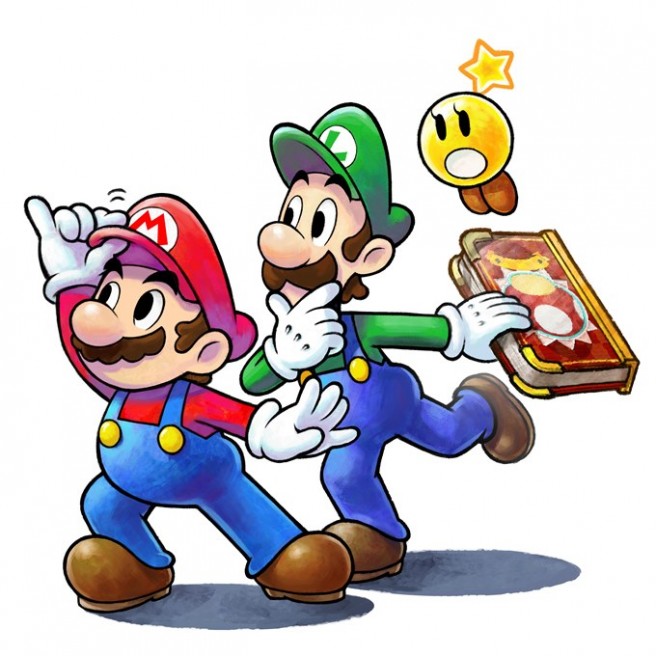Mario & Luigi: Paper Jam devs on bringing in Paper Mario, dash mechanic, more
A few members of the Mario & Luigi: Paper Jam development team were interviewed in this month’s issue of Nintendo Dream. The lineup includes producer Akira Otani (Nintendo), director Shunsuke Kobayashi (AlphaDream), and director of battle team Jun Iwasaki (AlphaDream).
We’ve translated some excerpts from the interview after the break. The staff commented on how it was decided that Paper Mario would appear, the new dash mechanic (and Shigeru Miyamoto signing off on it!), and more. Read on below for the full breakdown.
ND: Was it decided from the start that Paper Mario would make an appearance in this game?
Otani: We were thinking about the next project after developing the previous entry “Mario & Luigi: Dream Team”, but before deciding which characters would be in, there was an idea that we had to re-examine the use of buttons and the way of playing. The layout of controlling Mario with the A button and Luigi with the B button has been established in the series, but this was the first game in which we decided to add into the formula and use three buttons, even though the controls may became a bit complicated.
ND: Characters were decided based on the increased number of buttons, right?
Otani: The Y button is the easiest button to reach after A and B buttons, and we looked for characters that can perform actions by using these three buttons. Although it would be attractive to use a character that has already appeared in the series, I thought that it probably wouldn’t feel fresh, and then it came to my mind that it would be interesting if Mario and a Mario-like character coexisted. That is possible with Paper Mario and since Paper Mario is thin, I thought we could use the contrast of three dimensional and flat or heavy and light in creating new gameplay.
On dash:
Otani: Some people who played the previous game commented that movement on the field felt a bit slow, and it was decided in an early development phase that we’d introduce dash instead of increasing the movement speed. Originally if you didn’t push the A, B and Y buttons with a good rhythm within a fixed time, you couldn’t dash and you’d stop soon if you couldn’t keep up with it. We created this system as we thought the continued input was interesting even though it was a bit complicated, but when we brought it to Miyamoto, he said: “That’s too much trouble, one button is fine.” (laughs)
Kobayashi: The X button [dash] is perhaps the most often pushed button on the field. We conducted a survey within our company and some people went as far as saying “you can’t live without dash” (laughs).
ND: What was the concept for this game?
Otani: I thought a festival-like feel would be nice since characters of two worlds appear. I think perhaps the biggest concept was how to express festive feeling during the fun adventure of two Marios and Luigi.
ND: Are there elements which were brought in because of those festivities?
Kobayashi: Papercraft battles are the most full of festive essence.
Otani: The base form of papercrafts was drawn in an early proposal that was made by AlphaDream, but it was sort of like portable shrines [which are carried in festivals] crashing into each other. Although that was during a phase in which we hadn’t decided on the direction of the game, we wanted to explore for an option that had different gameplay than giant battles from the previous games, so I thought to investigate that issue thoroughly.
ND: It was strange how [Toads] dance to the music in Papercraft Battle, but it is festive isn’t it?
Kobayashi: I think the most festive feeling comes when Toads carry the papercraft like “Heave-ho! Heave-ho!” and fill the gauge.
Otani: In the beginning Toads really said “Heave-ho!”, but when we tried our luck and showed it to Miyamoto, we were told “This can’t be introduced outside of Japan.” (laughs)
ND: Enemy [papercrafts] break into pieces in an exciting way.
Iwasaki: In the beginning we were careful and developed [breakdowns] while thinking “I wonder if we are allowed to go this far”, but on the contrary Nintendo told us “please break them more”, so we changed the presentation similar to what it is now.
Thanks for making it to the end of this post! If you use any of this translation, please be sure to properly source Nintendo Everything. Please avoid copying its full contents if possible.
